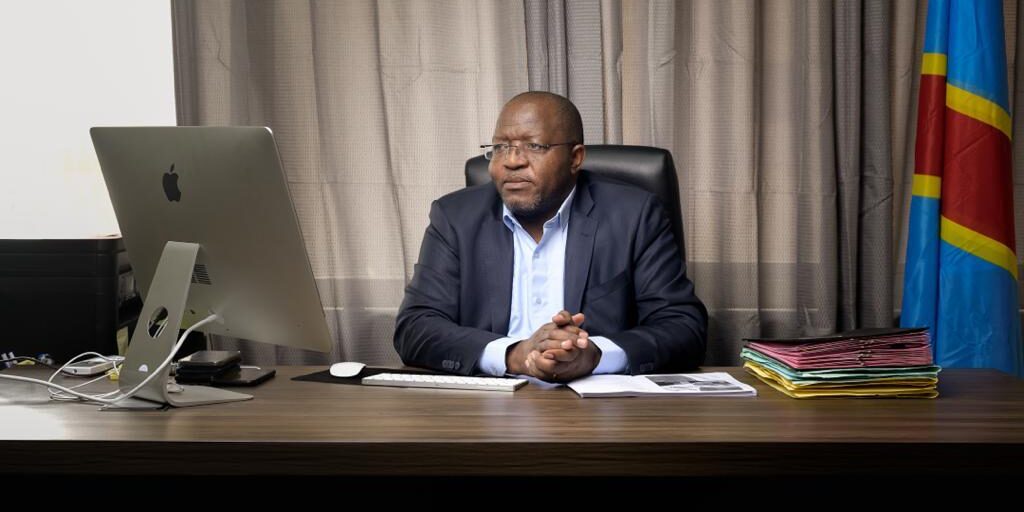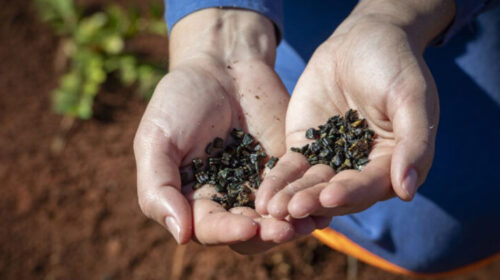“The challenges to be met in the mining sector of the DRC”,Willy Kitobo’s cry for the development of the mining sector
University professor, Willy Kitobo Samsoni, presented, on Friday June 17, 2022, in Kinshasa, the capital of the Democratic Republic of Congo (DRC), his new book entitled “the challenges to be met in the Mining sector of the Republic Democratic Republic of the Congo”.
This 239-page book indeed contains, for its author, a cry of alarm for the development of the mining sector of the Democratic Republic of Congo (DRC).
In front of media professionals, the Honorary Minister of Mines of the DRC indicated that this book has three missions, namely:
• List all the evils that plague the Mining sector for the exploitation of the ground and subsoil resources of the DRC;
• Identify the challenges to be met and sensitize the Congolese population, more particularly decision-makers and stakeholders in the sector, on the need to adopt good practices;
• Strictly apply the Mining Law to hope to achieve the objectives set by the legislators during the revision of the mining code of 2018.
In his presentation, Willy Kitobo Samsoni revealed that the mining resource potential of the Democratic Republic of Congo is very vast and varied. This is poorly known, explored and exploited on less than 12% of the national territory. It constitutes and will constitute by its valorization still for a long time the first source of the receipts of the State.
The author insisted on the need to adopt good practices and strictly apply the Mining Code to hope for real development in the Democratic Republic of Congo.
“In terms of mineral resources, energy resources but also hydroelectricity, the DRC has a very significant potential that is often described as a geological scandal. The valorization of this potential with a responsible management would make it possible to solve all its problems of electricity and economy in general. In reality, this geological potential is poorly understood. Since since the colonial era, research has only been carried out in depth on part of the national territory. And private mining operators continue to discover interesting deposits until today, in particular Ivanhoé in the province of Lualaba. “, said Professor Willy Kitobo.
According to him, the history of the DRC’s mines shows that the exploration and exploitation of mineral resources began very early in the colonial era with the creation of State Portfolio companies such as Gécamines, the Miba, Sakima and Sodemiko.
It was with the bankruptcy of these Congolese state companies that the latter was pushed to liberalize the mining sector to acquire private investment, he said.
According to him, the new Mining Laws, in particular the 2002 Mining Code, and several private investors interested in mining have enabled the revival of mining activities in the country, this time with the creation of more than 60 mining companies.
Several years have passed and a new 2018 Mining Code was promulgated in March 2018. This new Mining Code wanted to balance the mutual interests of the DRC and the private sector, review the social and environmental responsibilities of companies as well as push the country to emergence.
The failure of the DRC in the Mining sector
Although described by some as a geological scandal, the Democratic Republic of Congo (DRC) does not seem to benefit from its natural resources.
For Willy Kitobo Samsoni, the failure in the management of the DRC’s mining sector is largely attributable to the Congolese themselves.
For him, although the country has a legal arsenal in this sector, several laws suffer from lack of application.
“ Today, we tend to blame foreigners as the looters of our mineral resources and say that the mines do not benefit the country. I think we have to relativize what we often say. In this sense, our failure to manage our mineral resources is shared. Indeed, it is we who establish the Laws and decide on the granting of all mining and quarry rights to foreigners and nationals. We are still the ones who organize and control all mining activities. But unfortunately, all good laws always find flaws in their application. “ , he argued.
Willy Kitobo indicated that when one reads the motivations for the revision of the 2018 Mining Code, one understands that most of the evils of the mining sector were already identified. But neither the political authorities nor the mining authorities want to change things completely.
This work ” the challenges to be met in the mining sector of the DRC” is for the author a cry of alarm to make the Congolese understand that they are the only ones responsible for all the bad policy which blocks the development of the Mining sector. of the DRC. And this prevents the Congolese population from taking advantage of its wealth of the soil and subsoil.
In addition, the author indicates that this text, although complex in the eyes of many Congolese, not having a minimum of knowledge in the field of Mines, contains details accessible to a broader and multidisciplinary public.
Professor Willy Kitobo Samsoni’s 239-page book is divided into five (5) chapters.
The first chapter deals with the problems and the challenges of geological research for a better valorization of the important mining potential of the DRC.
This chapter focuses readers on the lack of knowledge of the country’s mineral resources and the difficulties encountered by the State to fully play its main role in the Mining sector as set out in Article 8 of the Mining Law, i.e. that is, to promote and regulate the development of the mining sector, to ensure the development of the mineral substances of which it is the owner by appealing in particular to private initiative in accordance with the provisions of the Mining Code and to improve the geological information of the national territory.
This first part of the book also evokes the coverage rate of mining activities to show the reader how, since the advent of the independence of the DRC, mining has been developed on only about 12% of the territory. national and this, on the basis of geological indices discovered since the colonial era.
The second chapter of this book is based on the administration of the Mining Code of the Democratic Republic of Congo and the governance of the mining sector. This chapter discusses stakeholders in the mining sector in the country who play an important role in the administration of the Mining Law for the success of the activities of the mining sector and the mobilization of revenues from this sector.
This same chapter covers the problems and challenges encountered in the management of the domain and mining title as well as all the problems encountered by the mining services during the monitoring and control of mining activities.
The third chapter concerns industrial mining itself, its importance in the economy of the country, the evils and the challenges to be met.
The penultimate chapter of this book focuses on artisanal mining, its importance in the social life of the Congolese population, the many evils that characterize it as well as the challenges to be met in order to solve this problem.
The fifth and last chapter takes up the problems and challenges to be met in the Mining sector to protect the environment. This same chapter focuses on the problems and challenges encountered in applying the provisions of the Mining Law on corporate social responsibility (CSR).
![]()





